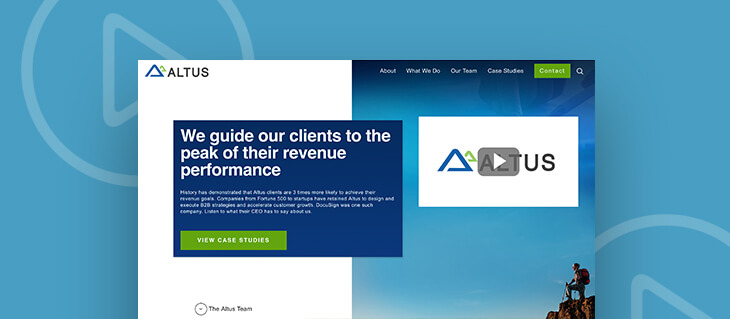Eight Best Practices for Using Video on the Web

Websites Featuring Videos Tend to Be More Effective—Here’s How to Use Video Content Wisely
These days, video content is king on the web. With smartphones becoming more powerful and editing applications more accessible, videos of all sizes and natures are more prevalent than ever.
More than likely, this trend is only going to grow. Studies suggest that websites featuring videos not only convert at higher rates, they also tend to rank better with search engines.
With that and mind, here are some best practices for adding video content to your own website.
Video on the Web Best Practices
- Don’t overdo it. Generally speaking, videos are best used sparingly to really make a point or showcase a feature. Keeping them short and cleanly looped can add personality to a page and bring attention to high-priority items.
- Provide a pop-up option. People generally don’t “hang out” in the masthead area of a website to watch banner videos go through their loops. Adding a button link that opens up the full video in a lightbox indicates the importance of the video and helps increase user engagement.
- Go with the optimal format. Currently, .mp4 is the best supported and most recommended format on the web. Additionally, an h264 codec keeps videos of that format looking sharp while also doing a good job of compressing the file (see our notes about file size above and if you want to know more what a codec is, Lifewire has a good breakdown).
- Be mindful of file size. Typically, a 720p resolution is as high as we need a video to be for it to function well as an HTML5 video. And any video you’re hosting on your own website should be smaller than 10mb in size whenever possible. As a general rule of thumb, the smaller the better since users have to wait for the file to load before the page itself loads.
- Consider external hosting. An exception to our “the smaller the better” rule comes in the form of hosting video content externally. By hosting the video file on a service like YouTube or Vimeo, you can still maintain a faster page load time while enjoying a little more flexibility with file size. As an added bonus, this makes your video discoverable in multiple locations. On the downside, you may have a harder time using these files as banners or backgrounds.
- Don’t jar your visitors with automatically playing audio. Videos that automatically run on your website shouldn’t be reliant on sound or audio—auto-playing audio content is a great way to guarantee a bunch of users will bounce from your website immediately. In fact, browsers like Chrome may not even play your video if it isn’t set to mute. Give your users the chance to consent to hearing the audio to ensure your videos are not doing more harm than good.
- Don’t put important information in video format without featuring it elsewhere. Having information in a video only (ie. Text in a video or visuals/imagery only present in a video) isn’t great for accessibility. Consider making a video optional and putting that information that’s in the video on the page in text form for a more accessible experience and additional SEO strength.
- Include closed captions. We talk a lot about accessibility around here and regularly remind ourselves that not all users access the web in the same ways. If your website features informational videos with important talking points, be sure to have captions available so that users with impaired hearing can enjoy your content as much as every other visitor.
TL;DR
Make your videos optional—especially when it comes to sound. Make them short and captivating. Don’t edit them with a resolution over 720p. Make them accessible. You’ve got this. Now go forth and convert.
Our Team of Experts Can Help Propel Your Digital Marketing Efforts Forward
At efelle creative, we take pride in our work and strive to stay ahead of the curve when it comes to content optimization and best practices for the web. If you’re in the market for a new website, contact our team of professionals today. We love helping our clients tell their stories in new and interesting ways. Reach us at 206.384.4909 or fill out our contact form below